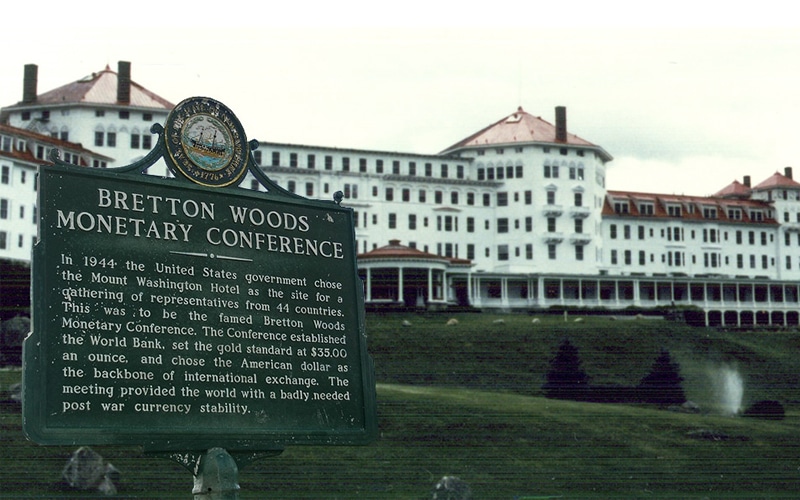Bretton Woods’ significance lies in the United Nations Monetary and Financial Conference held in the region in 1944. The officials in attendance formulated an agreement that facilitated economic reconstruction after the 2nd World War. In an attempt to avoid similar conflicts in the future, the represented countries created the International Monetary Fund and World Bank. The institutions would help foster international financial cooperation.
Bretton Woods Agreement
The treaty came to being in 1944 during the United Nations Monetary and Financial Conference at Bretton Wood in New Hampshire. The delegates in attendance were from 44 nations allied to World War II. The new system was in an effort to reconstruct the global economy post-war, facilitate international financial cooperation, and deter the recurrence of a situation similar to the Great Depression. It was a way of establishing a reliable foreign exchange system while suppressing trade wars.
Harry Dexter White and John Maynard Keynes, two economists, are behind the design of the Bretton Woods System. On the one hand, Keynes envisioned an international reserve currency known as the bancor and the Clearing Union to act as an influential global central bank. In comparison, White proposed a more powerful US dollar with a reliable lending fund. While the resultant system embedded both concepts, it contained more of White’s idea.
In 1958, the Bretton Woods system took effect. Prior to the implementation of the Bretton Woods Agreement, most nations utilized the gold standard. This meant that the value of most currencies was pegged to that of gold. After the 1944 agreement, most currencies were now pegged to the US dollar. The choice of the dollar was because the United States owned the largest amount of gold (3/4 of the global supply).
Subsequently, the value and demand of the US dollar increased in relation to that of other currencies. In the event of a weak currency, the country’s central bank would purchase it from the foreign exchange markets. The resultant decline in supply would increase its value in relation to the dollar.
Bretton Woods twins
The phrase ‘Bretton Woods twins’ refers to the International Monetary Fund (IMF) and World Bank. Both institutions were created during the 1944 delegates conference in Bretton Woods. The underlying focus was to foster economic reconstruction after World War II. Besides, the officials agreed to create a framework of interdependence that would promote global financial stability.
The IMF’s role is to oversee capacity and economic development, as well as offering financial resources to countries in need. Its economic surveillance aids in monitoring policies and actions that can impact the economy at a national and global level. On the other hand, the World Bank focuses on capacity building by lending funds to countries for developmental projects.
The Bretton Woods system’s collapse
The downfall of the Bretton Woods system began in 1971 when the United States experienced major stagflation. The intense recession and inflation resulted in reduced economic growth and a high unemployment rate.
There was too much of the US dollar in circulation, and gold was in short supply. Subsequently, there was a significant drop in its value. As a way of dealing with the looming crisis, President Richard Nixon began deflating the currency’s value in relation to gold. In the first phase, the dollar was devalued to 1/38 and then 1/42 of one ounce of the precious metal.
However, the devaluation approach was ineffective. There was a notable run on gold reserves as people rushed to exchange the devaluing US dollars for gold. This led the president to unpeg the dollar’s value from the precious metal in 1971. With no control in prices, the price of gold in the free market skyrocketed to $120 an ounce. This marked the ultimate collapse of the Bretton Woods system.



